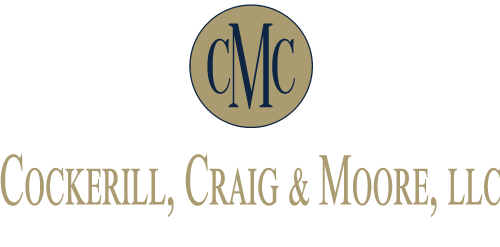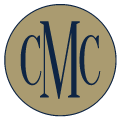CHOOSING YOUR HEALTH INSURANCE COVERAGE – CHOICES TO MAKE AND COSTS TO BALANCE

If you have health insurance through an employer provided plan, union plan, retirement plan, or Medicare you may not need to make any adjustments in your health insurance coverage your coverage will remain in place although you may have new options and protections under the Affordable Care Act. If you have such coverage now you may see changes in the coverage offered and your share of the cost of such coverage. On October 1, 2013 you can choose health insurance from a federally sponsored Exchange for coverage beginning January 1, 2014. This is part of the Affordable Care Act (commonly known as Obamacare) intended to make affordable health insurance more available. The federal exchanges will operate in 36 states including New Jersey. New Jersey’s Department of Banking and Insurance has data on coverage choices and costs in the individual health care market – which serves individuals and families who are not eligible for enrollment in group health plans principally available through their employer or union. The federal exchange will be operated independently from the New Jersey Department of Banking and Insurance portal. There are 3 key dates you’ll want to mark on your calendar:
- October 1, 2013: Marketplace open enrollment starts
- January 1, 2014: Health coverage can start
- March 31, 2014: Open enrollment ends
- After March 31, 2014, you can get new private health insurance for 2014 only through a special enrollment period if you have a qualifying life event like a job loss, birth, or divorce.
Twenty-nine separate health plans will be available on the Exchange in New Jersey and there are levels of coverage that balance the coverage with the premium. The levels are Bronze, Silver, Gold, and Platinum with Bronze the least expensive and Platinum the most expensive. The lowest cost bronze plan provides coverage for about sixty percent (60%) of anticipated health care costs at a weighted average premium of $332. A silver plan covering seventy ($70) percent of costs would compare at $385 per month. For the lowest earners not offered health insurance coverage by their employer, tax credit subsidies will reduce the costs of coverage further. For a family of four making $50,000 a year, the before subsidy premium for the second lowest cost silver plan would be $943 a month before subsidies – $282 after the subsidy. (*see the Star Ledger article on September 25, 2013 by Dan Goldberg and Ed Beeson at www.nj.com.)
HOW DO I KNOW WHETHER A POLICY THROUGH THE EXCHANGE IS RIGHT FOR ME?
Go to https://www.healthcare.gov/ to learn about the coverage options so you can compare the coverage and the costs. Only exchange policies will adjust your premiums based on your income and will help you evaluate whether you qualify for a subsidy or other government sponsored program like CHIP – the Children’s Health Insurance Program – or Medicaid.
HOW DO I START THE PROCESS?
You can prepare for enrollment through the exchange through using this checklist available on line from the Department of Health and Human Services. https://www.healthcare.gov/downloads/MarketplaceApp_Checklist_Generic.pdf You will need your social security number, your income – the W-2 forms you use to prepare your tax return or pay stubs, and the insurance information for any employer based coverage anyone in the family is eligible for whether you enroll in it. If you have questions visit HealthCare.gov or call their Call Center at 1-800-318-2596.
WHAT IF I AM A SMALL BUSINESS OWNER LOOKING FOR COVERAGE FOR MY EMPLOYEES AND NOT JUST MY FAMILY?
The Small Business Health Options Program (SHOP) opens for business October 1, 2014. For 2014, the SHOP Marketplace is open to employers with 50 or fewer full-time-equivalent employees (FTEs). The advantages of using SHOP include:
- You control the coverage you offer and how much you pay toward employee premiums.
- You can compare health plans online on an apples-to-apples basis, which helps you decide that’s right for your business.
- You may qualify for a small business health care tax credit worth up to 50% of your premium costs. You can still deduct from your taxes the rest of your premium costs not covered by the tax credit. Beginning 2014 the tax credit is available only for plans purchased through SHOP.
WHAT TO LOOK FOR WHEN BUYING HEALTH INSURANCE
No matter how you obtain your health insurance coverage here are the key factors to look at when buying health insurance coverage.
WHAT IS YOUR TOTAL OUT-OF-POCKET COST?
Insurance plans are designed to limit or control costs and they do this through a mix of premiums and patient financial responsibility. Whether you are buying coverage through the exchange or through your employer the issues are largely the same. Make sure you understand how coverage works, including things like premiums,deductibles, out-of-pocket maximums, copayments, and coinsurance. You’ll want to consider these details while you’re looking for health insurance.
WHAT, IF ANY, LIMITS ARE PLACED ON WHICH DOCTORS YOU CAN SEE?
- Health Maintenance Organizations (HMOs) and Exclusive Provider Organizations (EPOs)HMOs and EPOs may limit coverage to providers inside their networks. A network is a list of doctors, hospitals, and other health care providers that provide medical care to members of a specific health plan. If you use a doctor or facility not in the HMO’s network, you may have to pay the cost of the services provided.HMO members usually have a primary care doctor and must get referrals to see specialists. This is generally not true for EPOs.
- Preferred Provider Organizations (PPOs) and Point-of-Service plans (POS)These insurance plans give you a choice of getting care within or outside of a provider network. With PPO or POS plans, you may use out-of-network providers and facilities, but pay more than if you use in-network ones. If you have a PPO plan, you can visit any doctor without a referral.If you have a POS plan, you can visit any in-network provider without a referral, but you’ll need one to visit a provider out-of-network.
- High Deductible Health Plan (HDHP)High Deductible Health Plans typically feature lower premiums and higher deductibles than traditional insurance plans. As of 2013, HDHPs are plans with a minimum deductible of $1250 per year for individual coverage and $2500 for family coverage.If you have an HDHP, you can use a health reimbursement arrangement to pay for qualified out-of-pocket medical costs. This can lower the federal tax you owe.
- Catastrophic Health Insurance PlanA catastrophic health insurance plan covers essential health benefits but has a very high deductible. This means it provides a kind of “safety net” coverage in case you have an accident or serious illness. Catastrophic plans rarely provide coverage for services like prescription drugs or shots. Premiums for catastrophic plans may be lower than traditional health insurance plans, but deductibles are usually much higher. This means you must pay thousands of dollars out-of-pocket before full coverage kicks in.In the Marketplace, catastrophic plans are available only to people under 30 and to some low-income people who are exempt from paying the fee because other insurance is considered unaffordable or because they have received “hardship exemptions”. Marketplace catastrophic plans cover 3 annual primary care visits and preventive services at no cost. After the deductible is met, they cover the same set of essential health benefits that other Marketplace plans offer. People with catastrophic plans are not eligible for lower costs on their monthly premiums or out-of-pocket costs.
DOES THE POLICY COVER PRESCRIPTIONS?
Starting in 2014, no matter how you buy your health insurance—through the Marketplace, directly from an insurance company, or with the help of an agent or broker–all plans for individuals and small groups must cover the same set of essential health benefits. They include doctor’s visits, hospital stays, preventive services, prescription drugs, mental health, and other categories of coverage. Some health insurance policies provide different levels of coverage based on the type of drug prescribed. Some require you get generics. Most companies have a list of those pharmaceutical products considered “experimental” and those that are approved for reimbursement or coverage. The source for most of this information is https://www.healthcare.gov/ accessed on September 25, 2013.
Contact CockerillCraigMoore Law
To discuss your legal concerns with an experienced attorney, contact us online or call our office at 856-795-2220.


